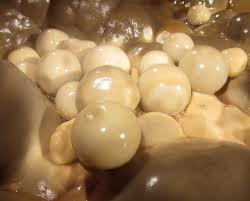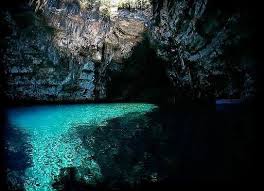The Southwestern United States is mainly known for the Indigenous people, past and present, the dearth of fresh water in rapidly growing cities, and perhaps for the large distribution of defense related organizations that are headquartered there. There are federal sites under strictly enforced entry regulations, where trespassers will be shot if discovered inside the boundaries of such reservations. The White Sands Missle Range alone is larger than several of the Eastern United States. The large number of National Parks and Monuments in New Mexico, Arizona, and West Texas are unique among the sites in the National Park System for their diversity and Pre-Columbian origin.
The drive to some of these National Parks and Monuments is long, and in some cases, far off the Interstate Highway System grid. New Mexico and Arizona are fortunate to have two natural wonders that are as spectacular as any others in the world. Grand Canyon and Carlsbad Caverns National Parks are one-of-a-kind wonders that attract visitors from around the world. Carlsbad Caverns is situated in the Guadalupe Mountains of Southeastern New Mexico and West Texas, and is a Park that takes a special effort to get acquainted with. These mountains are the remnant of a large reef of what was once a large inland sea. This feature is most visible at the Guadalupe Mountains National Park, some 70 miles south of Carlsbad Caverns.
The drive to some of these National Parks and Monuments is long, and in some cases, far off the Interstate Highway System grid. New Mexico and Arizona are fortunate to have two natural wonders that are as spectacular as any others in the world. Grand Canyon and Carlsbad Caverns National Parks are one-of-a-kind wonders that attract visitors from around the world. Carlsbad Caverns is situated in the Guadalupe Mountains of Southeastern New Mexico and West Texas, and is a Park that takes a special effort to get acquainted with. These mountains are the remnant of a large reef of what was once a large inland sea. This feature is most visible at the Guadalupe Mountains National Park, some 70 miles south of Carlsbad Caverns.
Texas's Highest Point-El Capitan Peak Guadalupe Mountains National Park
The foothills of the Guadalupes are the home of the spectacular caverns grouped under the name Carlsbad Caverns National Park. The main cave, Carlsbad Cavern, is situated about 27 miles south wet of Carlsbad, New Mexico, a great place to use as a base for exploration of the region. The caverns include a few caves requiring Park Ranger guiding services. The main cave was once a mine for bat feces, known as an excellent base for fertilizer. The main cave may be accessed by riding an elevator some 800 feet down to the entrance to The Big Room, the largest single cave chamber in the Western Hemisphere, or by hiking to the main cave entrance, a short distance from the visitor center. In the summer Mexican Freetail Bats enter the cave at sunrise and leave at sunset, making for an experience that is spectacular, if a bit scary.
Natural Entrance to Carlsbad Cavern
Park rangers await potential cavern hikers at an amphitheater near the Natural Entrance and inform people that the 1.7 mile walk is a strenuous hike, due to the fact that the trail, not suitable for wheelchair users descends the equivalent of walking down 830 feet of stairs, the equivalent of most of the Empire State Building. Despite the warning, this overweight hiker and his family elected to do the hike. The first quarter mile of the trail is incredibly steep and reeks of bat guano. The combination of those facts probably dissuades some folks from carrying on, but not our family. We kept going, and the trail got darker, and the reward was a series of beautifully lit cave formations that are a marvelous revelation for anyone who has not spent lots of time spelunking. Here are a few to whet your appetite....
These photos are shot by various persons who followed the main trail from the Natural Entrance. The sheer scale and variety of formations stupifies the viewer as one vista closes and another opens. The temptation is to rush through the cavern, due to the number of hikers who are in better physical condition, and who walk through at a brisk pace. For those of us who are not as fit, there are numerous benches and other places along the main trail to stop, rest, catch your breath, and enjoy the incredible formations. Another tip for those who don't regularly hike is bring water. The walk through the Main Entrance to the Big Room Junction is rigorous. You may want to start in the morning, when your legs are fresher, and your morning meal is digested. The cavern temperature is brisk, and a light windbreaker may help.
When you finally get to the intersection of the Main Entrance trail and the Big Room Trail, there are restrooms and a lunch room to refresh yourself and use the facilities. Some folks may be tempted to ride the elevator to the Visitor Center at this point, and that may be a good choice if you are simply beyond exhaustion. For the rest of us, The Big Room awaits. The chamber known as the Big Room is so large that one is hard pressed to get a perspective on its size. Suffice to say, it is eight plus acres of cavern, and the whole trail through it is a mile long and takes an hour to traverse. As mentioned above, the Big Room is the largest known chamber in the Western Hemisphere. Here are some pictures...to gain perspective, I have added a few photos with people appearing in them.
Big Room-Carlsbad Caverns National Park (previous 6 photographs)
Again, taking this relatively level walk slowly I highly recommend. The water you drink will help keep leg muscles from cramping up as badly as they might otherwise. The use of photography is governed by certain regulations which must be observed. Part of the Big Room walk is okay for wheelchair and scooter users, but consulting with a ranger is highly recommended.
No mention of Carlsbad Caverns is complete without a discussion of the amazing cave known as Lechuguilla Cave. It was discovered in the 1970s by spelunkers who noticed the cave "breathing" as they walked by. Lechuguilla Cave is the seventh longest cave in the world, and is some 1604 feet deep. The 1980s brought detailed mapping of the cave and recognition of the unique formations of the cave led to it being set aside as an underground wilderness, not open to casual visitors. Lechuguilla Cave's dimensions make the Carlsbad Cavern a second place finisher for size and features. The total length of Lechuguilla Cave is 134.6 miles (216.6 km). Here are some photographs from Lechuguilla Cave.
Photographs from Lechuguilla Cave-Carlsbad Caverns National Park-New Mexico USA
Finally, for the intense wild people, hiking and camping is allowed at Carlsbad Caverns National Park. Permits are required. The best seasons are fall or spring. The numerous poisonous animals that make the back country their home are in their lairs, and one is unlikely to encounter rattlesnakes, scorpions, or other unpleasant critters. Here are a few photos of the desert in the Park...
Scenes from the Carlsbad Caverns National Park backcountry
The closest airports to Carlsbad Caverns are the Albuquerque Sunport and El Paso International Airport. As may be seen from the map below, Carlsbad Caverns National Park is quite far away from major cities.
Map of Carlsbad Caverns National Park-New Mexico USA
Location of Carlsbad Caverns National Park-New Mexico USA
Carlsbad Caverns National Parks is designated a World Heritage Site and visitation details may be found here: Carlsbad Caverns National Park Website
Don't pass up the chance to visit a true wonder of the world.....

































